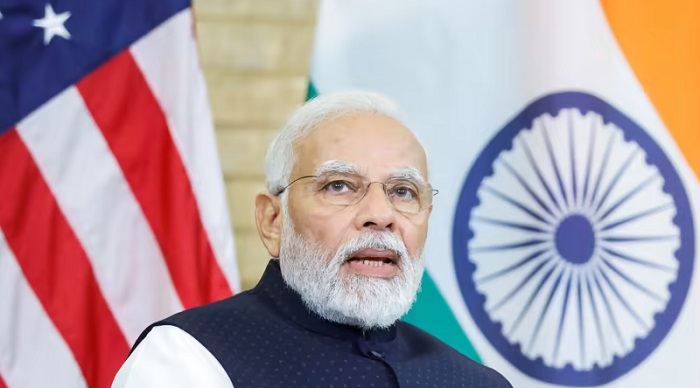
Indian Prime Minister Narendra Modi makes an “historic” visit to the U.S. this week with new defense deals on the table as the two nations boost military ties to counterbalance rival China.
Modi has traveled to the U.S. several times since taking office in 2014, but the three-day trip from Wednesday marks the first official state visit by an Indian leader since former Prime Minister Manmohan Singh’s 2009 trip during the Barack Obama administration.
As he left India on Tuesday morning, first headed to New York, Modi said his trip was “a reflection of the vigor and vitality of the partnership between our democracies.”
The two countries are “collaborating to further our shared vision of a free, open and inclusive Indo-Pacific,” Modi said in a statement. “Together we stand stronger in meeting the shared global challenges.”
U.S. Secretary of State Antony Blinken told the U.S.-India Business Council this month that Modi’s visit is “historic” and will “further solidify what President Biden has called the ‘defining relationship’ of the 21st century.”
Modi’s trip comes after India and the U.S. this month finalized a roadmap for defense industry cooperation during a visit to New Delhi by U.S. Defense Secretary Lloyd Austin.
The world’s two biggest democracies are part of the Quad, a strategic security grouping that also includes Japan and Australia which seeks to boost cooperation in the Indo-Pacific to contain China’s growing regional economic and military power.
Modi’s trip, which includes a state dinner on Thursday, is expected to see new defense agreements, including a partnership between General Electric Co. and India’s state-owned Hindustan Aeronautics to coproduce engines for India’s homegrown Tejas fighter aircraft, according to sources familiar with the matter.
They said another potential deal will see India buy armed drones produced by California-based General Atomics to boost Delhi’s surveillance capabilities, especially along a disputed Himalayan border with China that was the scene of a deadly 2020 clash between Chinese and Indian soldiers.
Russia is India’s biggest defence-equipment supplier, providing nearly half its military supplies, but Delhi is looking to diversify its arms imports and boost local defense manufacturing.
“Prime Minister Modi’s visit to the U.S. will be a game changer as the U.S. has decided to boost India’s indigenous capabilities in the economic, technological, and military fields; reduce its asymmetry with China and assist her in meeting recurrent threats on its borders with China,” said Yogesh Gupta, a former Indian ambassador and secretary in the Ministry of External Affairs.
Apart from the jet engine and drone deals, Gupta said the two countries are also likely to seal pacts on the coproduction of land mobility systems, smart munitions, as well as fast tracking cooperation in artificial intelligence, cybersecurity, space, supercomputers, quantum and other technologies.
Gupta, India’s former top envoy to Denmark, said the India-U.S. relationship was maturing as both see each other as long-term partners “with [a] convergence of outlook on threats to peace and security in the Indo-Pacific, exploring new strategic alignments in the Middle East and other regions; greater integration of their defence-industrial bases; resilient supply chains and seeking new opportunities for political, economic, and strategic cooperation.”
In January, the two countries launched an initiative on critical and emerging technologies, involving underwater sensors, artificial intelligence-based surveillance systems and radar networks, said Pankaj Jha, a professor of defense and strategic studies at the O.P. Jindal Global University.
“There is enough momentum [in ties]” to gets deals done, Jha said. “If not now, then when?” (Nikkei Asia)